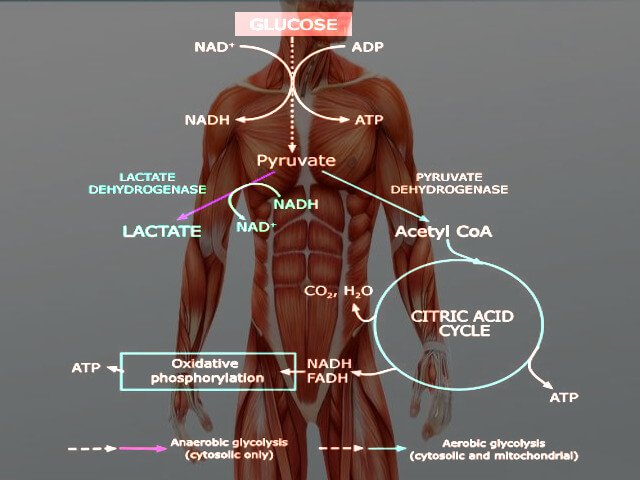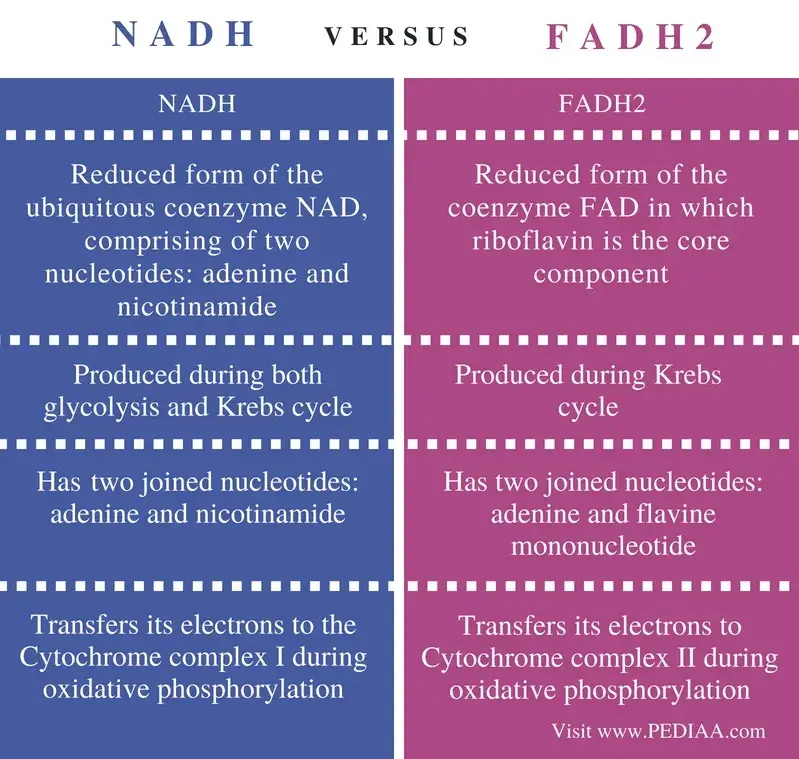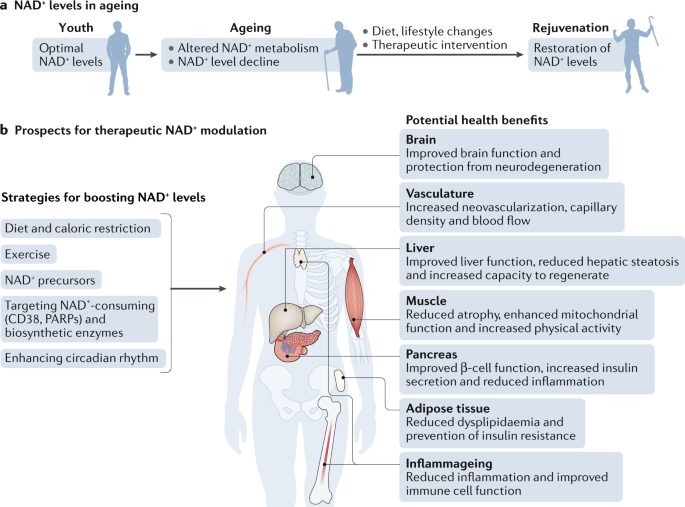The Crucial Role of NAD+ in Cellular Respiration

In this article, we take a deep dive into the intricate relationship between cellular respiration and NAD+, a coenzyme that plays a pivotal role in energy metabolism.
We will explore how NAD+ contributes to various cellular processes, including gene expression, DNA repair, and apoptosis.
We will also discuss how alterations in NAD+ levels can impact health and disease, particularly in the context of metabolic and neurodegenerative disorders.
To start with, here’s the key points of this article in an easy to “consume” format:
| Key Points | Explanation |
|---|---|
| Importance of Cellular Respiration | Cellular respiration is essential as it converts nutrients into usable energy, eliminates waste products, and supports growth and repair of cells and tissues. Without it, our bodies wouldn’t function properly. |
| Energy Production | The main purpose of cellular respiration is to convert nutrients into usable energy, stored in a molecule called ATP. Every activity, from moving to thinking, requires this energy. |
| Elimination of Waste Products | Cellular respiration helps in getting rid of waste products such as carbon dioxide and water, which are produced during the process. These waste products are then exhaled or excreted by the organism. |
| Supports Growth and Repair | The energy produced through cellular respiration is not only used for daily activities but also for growth and repair of cells and tissues in the body. |
| Role of NAD+ in Cellular Respiration | NAD+ plays a complex role in cellular respiration. It acts as an electron carrier in energy metabolism, influences metabolic signaling pathways, regulates gene expression, manages oxidative stress, and affects immune function. |
| Future of NAD+ Research | Understanding the roles of NAD+ is crucial for comprehending cellular function and disease. Future research on NAD+ promises to shed light on its diverse functions and potential therapeutic applications, possibly offering a novel approach to treat a wide variety of health conditions. |
What is Cellular Respiration?
Cellular respiration is a series of intricate biochemical reactions that are responsible for converting nutrients into usable energy.
This energy, in the form of Adenosine triphosphate (ATP), powers every action within the cell, from growth and repair to signal transmission and movement.

But how does this process happen?
That’s where our “protagonist”, NAD+ (Nicotinamide Adenine Dinucleotide), comes into play.
NAD+ is a coenzyme present in all living cells, acting as a critical electron carrier during cellular respiration. [1] Coenzymes are small molecules that are required for the proper functioning of enzymes.
NAD+ is derived from vitamin B3, also known as niacin or nicotinamide. It plays a crucial role in various metabolic reactions in the cell.
It participates in redox reactions, alternating between its oxidized form (NAD+) and its reduced form (NADH), facilitating the transfer of electrons and, consequently, energy production.
☝️ Redox reactions are chemical processes involving the transfer of electrons from one molecule (the reducing agent) to another (the oxidizing agent), resulting in a change in their oxidation states.
Understanding the role of NAD+ in cellular respiration is the key to unlocking the secrets of energy metabolism within cells.
It’s also crucial in understanding how cells respond to stress, age, and disease.
The beauty of NAD+ lies in its versatility – it’s involved in multiple biological processes, including glycolysis, the Citric acid cycle, and the electron transport chain (ETC).
Understanding the Role of NAD+ in Cellular Respiration
The role of NAD+ in cellular respiration can’t be overstated. Here is a step-by-step explanation of the role of NAD+ in cellular respiration: [1]
Glycolysis
In glycolysis, the first stage of cellular respiration, occurs in the cytoplasm of the cell.
Glucose is broken down into two molecules of pyruvate. In this process, NAD+ is reduced to NADH by accepting a pair of high-energy electrons from glucose. This conversion of NAD+ to NADH is essential for the continuation of glycolysis.

This conversion is vital because NADH carries these electrons to the electron transport chain where they are used to generate more ATP.
Pyruvate Decarboxylation
After glycolysis, the pyruvate molecules produced are transported into the mitochondria. Before entering the next stage of cellular respiration, pyruvate is converted into acetyl-CoA through a process called pyruvate decarboxylation.
During this step, NAD+ is again reduced to NADH by accepting high-energy electrons from pyruvate.
☝️ Mitochondria are double-membraned organelles found in eukaryotic cells. They are often referred to as the “powerhouses” of the cell because they generate most of the cell’s energy in the form of adenosine triphosphate (ATP) through cellular respiration.
Citric Acid Cycle (Krebs Cycle)
The acetyl-CoA produced from pyruvate decarboxylation enters the citric acid cycle, which takes place in the mitochondria.
In this cycle, acetyl-CoA is further broken down, releasing carbon dioxide and generating high-energy electrons.
These electrons are transferred to NAD+, converting it to NADH. The NADH produced in the citric acid cycle carries the high-energy electrons to the next stage of cellular respiration.
Electron Transport Chain
The final stage of cellular respiration is the electron transport chain, which occurs in the inner mitochondrial membrane.

The high-energy electrons carried by NADH are transferred to the electron transport chain. As the electrons move through the chain, their energy is used to pump protons (H+) across the membrane, creating an electrochemical gradient.
This gradient is then used to generate ATP through a process called oxidative phosphorylation. Once the electrons have passed through the electron transport chain, they combine with oxygen to form water.
This process regenerates NAD+ from NADH, allowing it to participate in glycolysis, pyruvate decarboxylation, and the citric acid cycle again.
KEY TAKEAWAY
NAD+ plays a critical role in cellular respiration by accepting high-energy electrons from glucose and pyruvate and transferring them to the electron transport chain. This process generates ATP, the energy currency of the cell, and regenerates NAD+ for further use in the metabolic pathway.
NADH, FAD+, and Their Roles in Metabolic Processes
NADH isn’t the only important player in metabolic processes; another coenzyme, FAD+ (Flavin Adenine Dinucleotide), also plays a significant role. [2]
Just like NAD+, FAD+ participates in redox reactions, accepting electrons and protons to become FADH2 during the Citric acid cycle and fatty acid oxidation. FADH2 then carries these electrons to the ETC where they contribute to ATP production. [3]
In comparison to NAD+, FAD+ carries fewer electrons to the ETC. However, it’s equally important because it operates at a different point in the ETC, allowing for a more efficient electron transfer and, consequently, increased ATP production.

Thus, both NADH and FADH2 are crucial to the functioning of the ETC and our cells’ energy production.
It’s important to note that NADH and FADH2 are interconnected. Both are created in the Citric acid cycle and fatty acid oxidation, and both contribute electrons to the ETC.
The Impact of NAD+ on Metabolic Signaling Pathways
Beyond its central role in cellular energy metabolism, NAD+ also impacts metabolic signaling pathways.
☝️Metabolic signaling pathways are a series of chemical reactions that occur within cells to regulate various metabolic processes, such as energy production, nutrient utilization, and cellular growth.
As a coenzyme, NAD+ is involved in reactions catalyzed by enzymes, influencing the regulation of these pathways. For example, it participates in other metabolic processes of such as DNA repair, gene expression, and cellular aging. [4]
NAD+ also impacts the function of SIRT proteins (sirtuins), a family of enzymes that regulate various biological processes including inflammation, stress resistance, longevity and aging. [5]

SIRT proteins require NAD+ to function, and their activity is closely tied to the NAD+ levels within the cell. Therefore, NAD+ plays a key role in cellular health and longevity through its impact on metabolic signaling pathways.
Moreover, NAD+ can influence the AMPK signaling pathway, a central regulator of cellular energy homeostasis. AMPK activation is dependent on the ratio of NAD+ to NADH, highlighting NAD+’s role in metabolic regulation. [6]
NAD+ Biosynthesis and Its Importance
Understanding NAD+ biosynthesis is fundamental to fully grasp its role in cellular respiration.
NAD+ can be synthesized in cells through various pathways, including the salvage pathway, the de novo pathway, and the Preiss-Handler pathway. [7]
These pathways ensure a steady supply of NAD+ in the cell, essential for maintaining cellular functions.
Salvage pathway
This pathway involves the recycling of nicotinamide (a component of NAD+) from degraded NAD+ molecules or other NAD+ derivatives. The salvaged nicotinamide is then converted back into NAD+ through a series of enzymatic reactions.
This process is critical because it allows the cell to maintain a constant supply of NAD+ without needing to synthesize it de novo, saving energy and resources.

De novo pathway
In contrast, the de novo pathway synthesizes NAD+ from simple building blocks, such as amino acids (e.g tryptophan) and nucleotides.
While this pathway is less efficient than the salvage pathway, it’s crucial during times of cellular stress when NAD+ levels may be depleted.
Preiss-Handler pathway
Finally, the Preiss-Handler pathway synthesizes NAD+ from nicotinic acid, a form of vitamin B3 through a series of enzymatic reactions.
This pathway is a variation of the salvage pathway and is specific to certain organisms, such as bacteria and yeast. It is less common but plays a role in certain cell types and tissues.
Exploring NAD± Dependent Signaling Pathways
NAD+-dependent signaling pathways are vital for cellular functions. These pathways rely on NAD+ as a substrate, making it a key player in various cellular processes.
For instance, NAD+ is crucial for the function of PARP (Poly [ADP-ribose] polymerase) proteins, enzymes involved in DNA repair and apoptosis. [8]
PARP proteins consume NAD+ to add ADP-ribose groups to proteins, a process known as ADP-ribosylation.
Similarly, NAD+ is vital for the function of SIRT proteins, as mentioned earlier. These proteins deacetylate other proteins, altering their function. This process requires NAD+, which is consumed in the reaction.
Furthermore, NAD+ plays a role in the function of CD38, an enzyme involved in calcium signaling and immune response. [9]
CD38 uses NAD+ to produce cyclic ADP-ribose, a molecule that regulates calcium levels within the cell. Thus, NAD+ is integral to various signaling pathways, highlighting its multifaceted role in cellular function.
How NAD+ Influences Immunological Pathways
NAD+ also influences immunological pathways, highlighting its role in immune function.
- CD38: One way it does this is by regulating the function of CD38, an enzyme expressed on the surface of immune cells. CD38 uses NAD+ to generate calcium-mobilizing metabolites, affecting immune cell activation and function.
- SIRT Proteins: Moreover, NAD+ is required for the function of SIRT proteins, which are involved in inflammation and stress resistance. By regulating the acetylation of proteins, SIRT proteins can influence the function of immune cells, affecting the body’s inflammatory response.
- NLRP3: Furthermore, NAD+ levels can influence the activation of the NLRP3 inflammasome, a protein complex involved in the immune response to infection and stress. [10]
- NRF2: NAD+ can influence the activity of NRF2, a key regulator of the cellular antioxidant response. NRF2 activation is dependent on the NAD+/NADH ratio, linking NAD+ levels to the cell’s ability to combat oxidative stress. [11]
Thus, NAD+ plays a pivotal role in immune function and a critical role in managing oxidative stress, affecting the body’s ability to respond to infection and inflammation and promoting cellular health.
NAD+ in Metabolic Disorders and Neurodegenerative Disorders
Given NAD+’s central role in energy metabolism and cellular function, it’s not surprising that alterations in NAD+ levels are linked to various health conditions, including metabolic disorders and neurodegenerative disorders. [x]

In metabolic disorders like obesity and type 2 diabetes, NAD+ levels are often reduced, impairing cellular energy metabolism and insulin sensitivity.
Restoring NAD+ levels, either by supplementing with NAD+ precursors or by boosting NAD+ biosynthesis, has been shown to improve metabolic health in animal models.
Similarly, in neurodegenerative disorders like Alzheimer’s and Parkinson’s disease, NAD+ levels are often decreased. [12]
Given NAD+’s role in neuronal energy metabolism and cell survival, boosting NAD+ levels could potentially offer a therapeutic strategy for these devastating conditions.
Resveratrol Capsules | 1000mg | 98% Polygonum cuspidatum | Longevity, Cellular Health, & Sirtuin Support
- High quality, Trans-Resveratrol capsules by Nootropics Depot. Quantity per bottle: 6 capsules – 2 capsules per day.
- Has a minimum of 98% resveratrol in it – at 1000mg per dose.
- From $44.99/bottle
⭐⭐⭐⭐⭐ | 4.8 (7 reviews)
Frequently Asked Questions
Conclusion: The Future of NAD+ Research in Cellular Respiration
The role of NAD+ in cellular respiration is complex and multifaceted. It acts as an electron carrier in energy metabolism, influences metabolic signaling pathways, regulates gene expression, manages oxidative stress, and affects immune function.
Understanding these roles is crucial for comprehending cellular function and disease.
Future research on NAD+ promises to shed light on its diverse functions and potential therapeutic applications.
From metabolic disorders to neurodegenerative diseases, boosting NAD+ levels could offer a novel approach to treat a wide variety of health conditions.
Read Also




